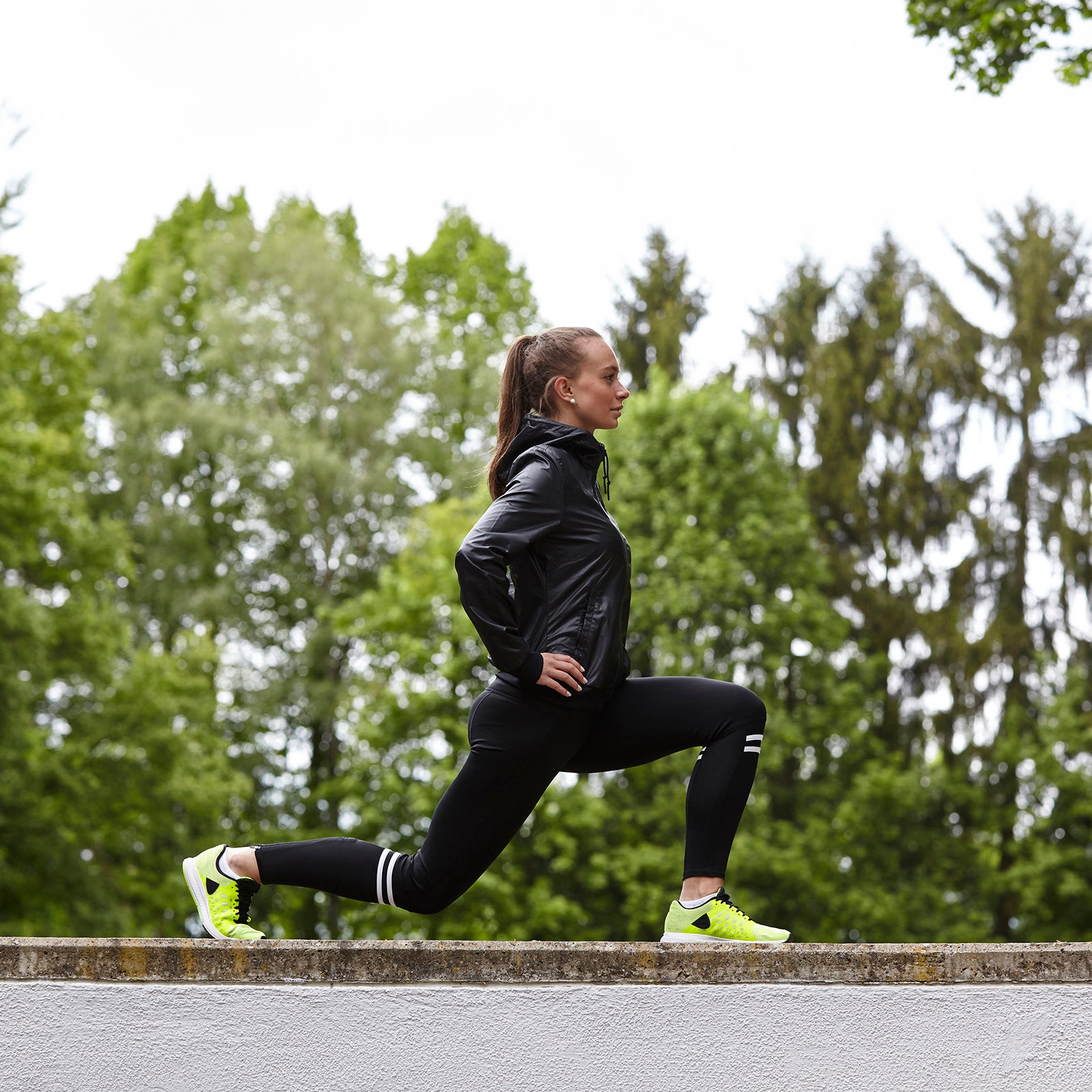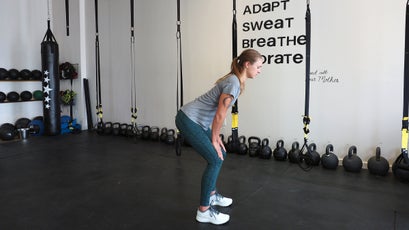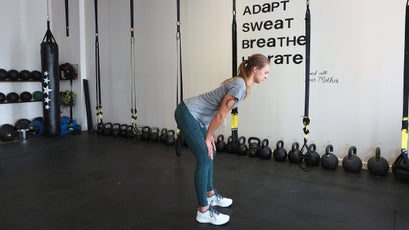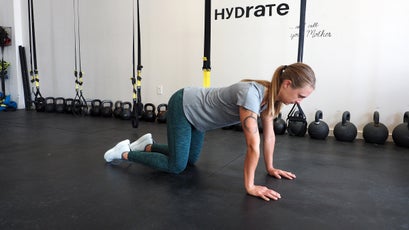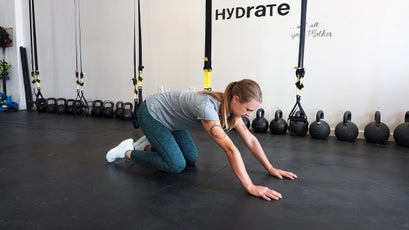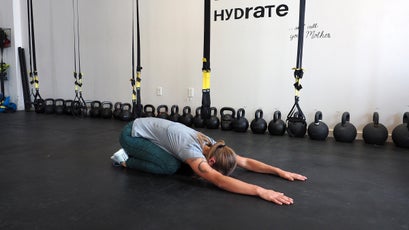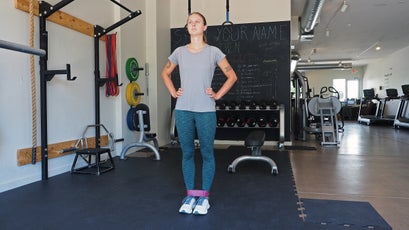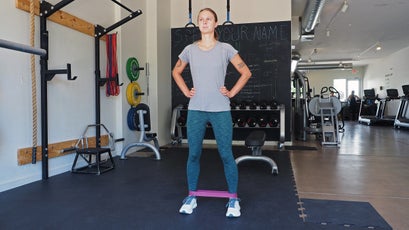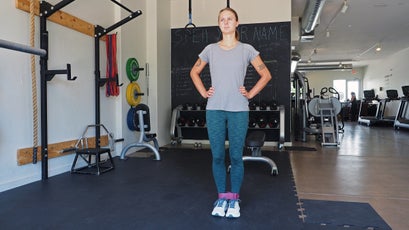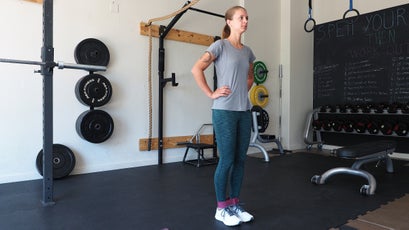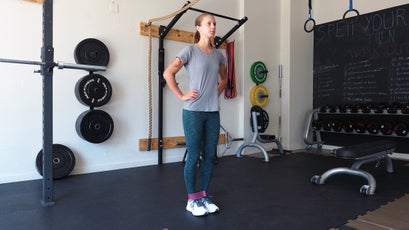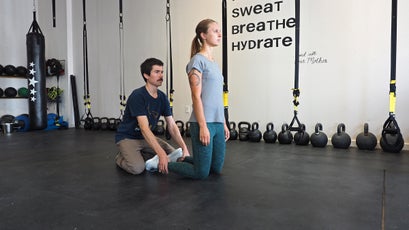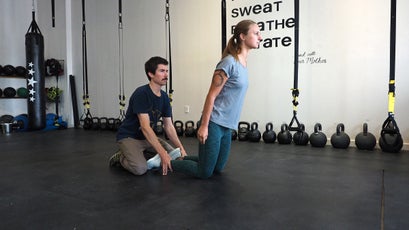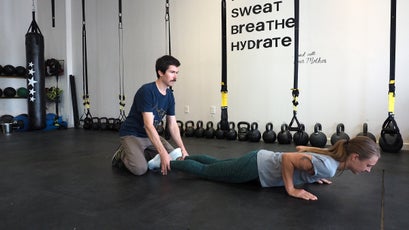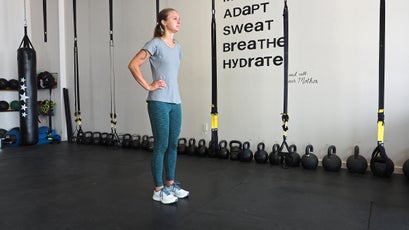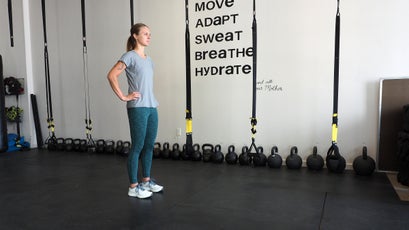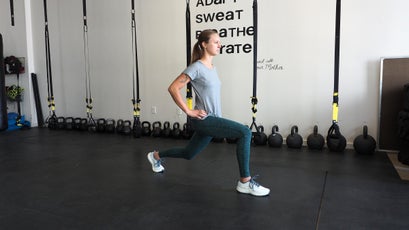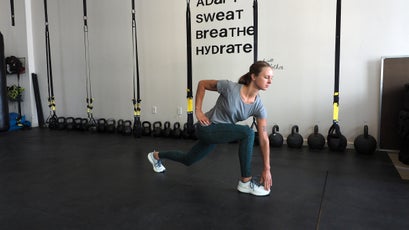Hamstring strains are one of the most common—and frustrating—soft-tissue injuries suffered by��athletes. There are two main types: an acute strain and a proximal hamstring tendinopathy, a chronic-overuse injury often related to improper movement patterns and . Whatever the cause, hamstring problems are notoriously hard to resolve.
“The longer you let it linger, the more your body will compensate and accommodate, and the harder it is to get rid of, even if you see a PT,” says , a board-certified orthopedic clinical specialist and physical therapist in Boulder, Colorado. “Like a scab, if you keep yanking on it and irritating it, the injury will never heal.” Since the cycle can be brutal to break and reoccurrence is common, it’s crucial to stay ahead of it with a thorough injury-prevention routine.
The hamstrings are a group of powerful muscles that span from the pelvis to the knee on the back side of the upper leg. Their two main roles are to extend the leg (pull it backward) and bend the knee—motions we use in every mountain sport and in daily life. We engage and unnecessarily load��the hamstrings more than we think, which builds up tension and can lead to acute or chronic-overuse injuries. When you’re running or hiking uphill, for example, it might seem like you’re mostly using your quads, but you’re also putting tension on the hamstrings, especially if you’re overstriding or high-stepping to navigate rocks or roots. Eccentric control on the hamstring is crucial for going downhill as well.
“You need to have good control of the whole kinetic chain to have proper mechanics, so you’re not loading the hamstring more than necessary,” Haas says. That not only requires good strength and mobility in the hamstrings��but also in the hips and glutes to properly distribute the workload.
The exercises below, recommended by Haas, cover the critical bases of hamstring-injury prevention—mobility, strength, neuromuscular control, and stability—with the ultimate goal of making��your hamstrings stronger, better balanced, and more resilient in the mountains. Do these exercises three to five times per week, on their own or mixed into your regular training routine.
Tools You’ll Need
- Massage stick or foam roller
- Looped resistance band (also known as a mini band)
- Kettlebell or dumbbell (optional)
The Moves
Dynamic Hamstring Mobilization
What it does: Gently warms up��the hamstrings.
How to do it: Start in a half-squat position, with your feet hip-width apart. Rest your hands on your knees��or your forearms on your thighs. Lift your sit bones as you gently straighten your legs until you feel a mild stretch in the hamstrings. Pause for a few seconds, then return to the starting position for one repetition. Keep your back flat, and avoid creating pain in��the high hamstring region with too much tension.
Child’s pose��also offers a great stretch in the high hamstring and relieves��tension in��the upper tendons—a common location for hamstring injury.
Volume: Five��to ten��reps.
Side Steps with Resistance Band
What it does: Strengthens the hip-abductor muscles (glutei��medii, glutei��minimi, and tensor fasciae latae).
How to do it: Put a resistance band around your ankles, and stand with your feet together. Bend your knees and hips slightly, and place your hands on your hips to ensure they don’t move. Then slowly take hip-width steps to one side, making sure to keep your toes pointed forward and your pelvis level (step one foot roughly 12 inches to the side, and then, with control, bring the other��foot to meet the first). Continue in the same direction for 15 steps, then repeat in the opposite direction. Pay close attention to proper form, and don’t allow your knees to collapse inward, since this pattern feeds the faulty mechanics that lead to knee pain.
Volume: Three��sets of 15 reps on each side.
Backward Skates with Resistance Band
What it does: Strengthens the glutes and the hips to reduce the load on the hamstrings.
How to do it: With a resistance band around your ankles, stand with your feet together��and a slight bend in your knees. Take diagonal steps backward, alternating sides. Between each step, bring your feet back together: step backward with your right foot, bring in your left foot, step backward with your left foot, bring in your right foot, and so on. With each step, keep your heel down so you land on a flat foot versus on your toes—this should feel more like you’re sliding your foot backward than stepping. Like the previous exercise, keep your toes pointed straight ahead, and focus on knee position and good form.
Volume: Three��sets of 15 reps on each leg.
Nordic Hamstring Curl
What it does: Strengthens the hamstrings and glutes through eccentric lowering. This exercise halves the rate of hamstring injuries when included in injury-prevention programs, according to the latest research published in the .
How to do it: Start by kneeling on a mat, with your shins parallel and directly behind you��and your knees hip-width apart and bent at 90 degrees. Have a partner hold down your ankles or lock your feet beneath a fixed object. Engage your core, hold your arms at your sides, then extend your knees to lower your upper body as slowly as possible. Land in a push-up position to cushion the force, then use your arms to push back to the starting position for one repetition. Don’t bend at the hips—your upper body should remain in a straight line from knee to head.
Volume: Three��sets of 10 to 15 reps (or as many as you can do in good form—these are difficult).
Single-Leg Deadlift (Runner’s Deadlift)
What it does: Loads the while training control of the posterior chain (the back of the legs and body) and balance through a functional-based movement pattern.
How to do it: Stand on one leg, with a slight bend in your knee. Engage your core, then without rounding your back, reach forward and down toward the floor as you lift your free leg behind you and onto��the same horizontal plane as your trunk. Continue raising your free leg (keep it as straight as possible) and lowering your torso until they are parallel to the floor��or as far as you can go without losing good form. Then slowly reverse the movement for one repetition. Remember to keep your hips level (think about pointing your raised foot toward the floor) and your back straight, and focus on leg control.
Start with body weight only, and once you can do the exercise with proper form, make it harder by holding a weight such as a kettlebell or dumbbell in the opposite hand of the grounded leg.
Volume: Three��sets of 10 to 15 reps on each leg.
Walking Lunge with Trunk Rotation and Toe Touch
What it does: Incorporates neuromuscular control and patterning for the entire kinetic chain from when the foot hits the ground.
How to do it: Stand tall, with your feet hip-width apart. Take an exaggerated step forward (around two feet in distance), then sink your hips into a lunge until your front thigh is parallel to the ground (or as deep as is comfortable). Keep your knee behind your toes of��the front leg. From here, slowly reach forward to touch your front foot with the opposite hand, focusing on leg control and alignment—do not allow your knees to collapse inward, and avoid rounding your back as you reach (instead, hinge forward at the hips). Return to the upright lunge position, then stand up by bringing the rear leg forward to meet the other. This is one repetition. Step forward again with the opposite leg, and repeat.
Volume: Three��sets of 10 to 15 reps on each leg.
More��Tips for Happy Hamstrings��
Roll out��daily. Self-myofascial release��releases tension in the muscles to improve mobility.��Use a massage stick or foam roller to gently roll out the hamstrings, applying firm pressure��but not so much that it hurts. Take it easy on any overly tight or sensitive areas. This should feel good, not painful. If your hamstrings are supertight, Haas recommends a massage stick rather than��a foam roller, since you can use it in a bent-knee position, which takes tension off the hamstring, whereas a foam roller requires a straighter leg. In an ideal world, you’d foam-roll daily��before your workout to��loosen up the hamstrings, Haas says, and again after exercise to flush tension.
Do a sport-specific, dynamic hamstring warm-up before activity. “There are 5,000 ways to warm up the hamstrings—it’s just a matter of using a similar movement pattern to the activity you are about to do,” says Haas. For example, if you’re going to rock climb, use a box, bench, or boulder for step-ups��to gently activate the hamstrings (a steep approach hike can do the job as well). The dynamic hamstring mobilization, above,��or kick-outs—swinging your leg forward and back while holding onto a stationary object—are��other ways to warm up the hamstrings before hiking, running, biking, skiing, or climbing. With the kick-outs, be mindful about hinging at the waist or rounding the back in an attempt to touch your toes, since this will pull on other structures and won’t target the hamstrings as well.
Avoid movement patterns that heavily load the hamstrings.��High-stepping and heel-hooking while climbing, or overstriding while running, hiking, and walking, are perfectly OK��to do when your hamstrings are strong and can handle the load, but if they’re weak or already irritated, there’s potential for acute injury (pulling a hammy)��or prolonging the injury cycle. If you crank on your hamstrings and they twinge or ache, ease up or avoid that particular move altogether. If hamstring injuries are a reoccurring issue for you, see a qualified trainer or medical practitioner for biomechanical analysis.
Recover. Exercise creates tension and inflammation in muscle and connective tissue. After a workout session, and before you sit down on the couch,��spend a few minutes to roll out and flush the hamstrings��so you don’t stiffen up. days between training sessions can also help you stay loose.


